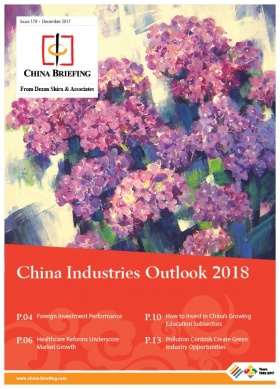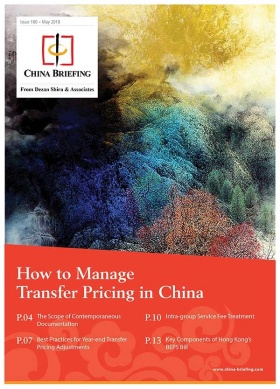China’s FDI Policy: Wider Market Access, Regional Incentives Announced
On September 26, China’s State Council announced that it will introduce new measures to attract more foreign investment and improve the country’s business environment.
They tie in with the country’s ongoing structural economic reforms, which have gained urgency and momentum since the trade war began with the US.
Recent moves by the Chinese government offer direction on how the new foreign investment incentives will take shape.
The country has introduced mechanisms to improve the delivery of major foreign investment projects, reduce import tariffs, streamline customs clearance, and establish an online filing system to regulate FDI.
China’s FDI policy: Expanding market access, incentive packages
According to the latest announcement, China will ensure that foreign and domestic investors will be given unified market access for industries not included in the Negative List.
Further, large-scale investment projects will be offered land and sea-use approval support, benefit from accelerated environmental impact assessments, and enjoy measures to cut logistics costs.
It is likely that regional governments will develop their own incentive packages to attract and facilitate foreign investment, tailored to their economies and available resources.
For example, Guangdong province recently announced cash rewards of up to RMB 100 million (US$14.56 million) for qualified investment projects and accelerated the market opening of previously restricted industries, among other investment incentives.
Import tariff cuts
At the same State Council meeting, it was decided that China would cut import tariffs on 1,585 taxable items, including machinery, textiles, paper products, and construction materials.
The move follows other tariff cuts on consumer goods announced earlier this year and near the end of 2017.
China also reduced tariffs for five Asian countries in July, and hopes to finalize the massive RCEP trade deal by November.
Efficient customs clearance
China will streamline and accelerate customs clearance by slashing the number of customs clearance documents from 86 to 46.
Further, compliance costs for container shipments will be reduced by at least US$100 by the end of 2018. China will release a complete list administrative charges at ports by the end of October.
Following the sweeping institutional reform announced earlier this year, responsibility for entry and exit inspection and quarantine was shifted from the General Administration of Quality Supervision, Inspection and Quarantine (AQSIQ) to the General Administration of Customs (GAC).
The institutional reform aims to streamline government bureaucracies and reduce overlap between agencies.
Online filing system to manage investments
China will establish an online system to manage and regulate foreign investment, which should streamline business management and communication with the government.
Earlier this year, the central government directed local governments to adopt a “One Window, One Form” policy to simplify business registration for foreign investors and improve information sharing among government offices.
For example, on June 30, Shanghai launched an online platform for reporting business information. Guangdong province also recently announced plans to fully implement the policy.
The establishment of online filing systems across the country is part of China’s Internet Plus policy, which seeks to digitize government functions, and its wider goals to improve the country’s business environment.
China ranks 78 out of 190 economies for ease of doing business, according to the latest rankings from the World Bank.
China’s structural economic reforms a work in progress
China has released a slew of measures to bolster its economy in recent weeks, as it experiences a slowing domestic economy amid a financial de-risking campaign and headwinds from the escalating trade war with the US. Other recent measures include tax cuts for small and micro enterprises and increased export tax rebates.
Given that trade frictions with the US show no signs of abating, more measures to bolster the country’s economy can be expected going forward.
However, rather than massive financial stimulus and infrastructure investment – which China turned to amid the 2008 financial crisis – the country’s current supportive measures largely expedite the implementation of pre-existing policy priorities.
These policies are designed to help China’s economy undergo a structural shift amid rising land and labor costs and an embrace of advanced technologies.
New incentives to attract foreign investment are therefore likely to follow these priorities, with preferential policies for high quality investments and high-tech projects that will help China transform its economy.
About Us
China Briefing is produced by Dezan Shira & Associates. The firm assists foreign investors throughout Asia and maintains offices in China, Hong Kong, Indonesia, Singapore, Russia, and Vietnam. Please contact info@dezshira.com or visit our website at www.dezshira.com.
- Previous Article Chinese Accounting Standards: A Primer for Foreign Investors
- Next Article Tax Deregistration in China: New Rules Simplify Process









